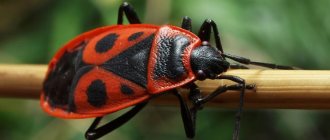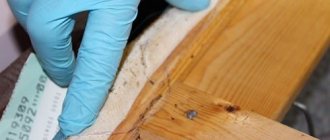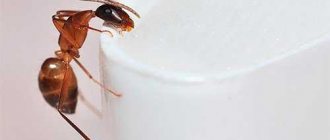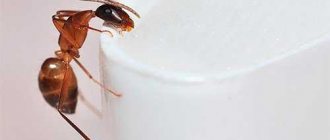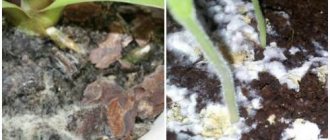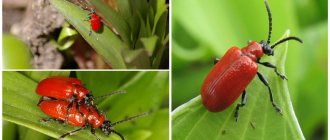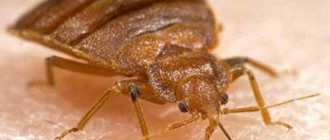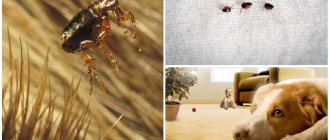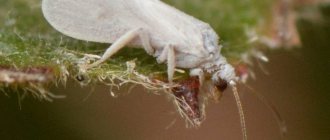Growing fruit and berry crops is painstaking work in itself. It is necessary to take care of planted plants taking into account unpredictable weather and climate. There are many diseases that need to be prevented and treated as soon as possible. Numerous pests cause considerable damage to the future harvest. Many of them are familiar to every gardener: snails, Colorado potato beetles, and so on. But not everyone knows how much damage the wingless red bug (Pyrrhocoris apterus) can cause. Therefore, it is worth considering what soldier bugs look like, what they eat, and how they reproduce. It is also important to determine why these pests have chosen the summer cottage and how best to deal with them.
External differences of the soldier bug
The body of the soldier bug is round, slightly flattened. The insect has a bright color: the body is black, the pronotum and elytra have a red pattern. Bedbugs have no wings. The eyes are red, the mustache and paws are black. The length of the soldiers is 8–11 mm. The oral apparatus is equipped with a piercing-sucking proboscis, which is in a horizontal position.
lenslenses
adventurenaturetime
dicdoc.macro
When eating food, the proboscis tenses and becomes like a needle. With its help, the insect pierces plants and feeds on cell sap.
Red bugs often gather in groups in one place - adults and larvae, which is a distinctive feature of the species. The name “soldiers” comes from the property of being arranged into unique divisions and the colors of the chitinous cover.
Who is often confused with?
The red bug is often confused with two insects:
- Firefighter beetle, soft beetle (Cantharidae). In fact, insects have nothing in common with each other, except for confusion in names. The fire beetle belongs to the order Coleoptera. It has a long body 1–1.5 cm - twice as long as that of the soldier bug. The elytra and tarsi are black, with filamentous whiskers. The mouthparts are gnawing. Insects have wings with which they move through the air. The beetle's abdomen is orange or red.
a.koptyrevana_tasha.sh
gita089
- Blackhead (Corizus hyoscyami). In appearance, the insects are very similar to each other. The differences are in the position of the head: triangular, slightly tilted, and the shape of the pattern on the back. The eyes are darker than those of the soldier bug - closer to brown. Insects live mainly on umbrella plants: onions, dill. The larvae feed on henbane and tobacco leaves. The henbane bug is very similar to the soldier bug
In England, the soft beetle is called the soldier beetle due to the similarity of its color to the uniform of the royal guards.
Distinctive characteristics
The soldier bug is not the only name for this bug. Due to its unusual coloring (patterns, spots with black dots on a red background), it is also called a fireman. And the absence of hind wings explains the third name - wingless red bug.
The soldier bug looks like an ordinary ground bug with a characteristic pattern on its back.
Please note: the wings are yellow, but the pattern is always the same.
The size of the bug does not exceed 8-10 mm, and the body has a round, slightly flattened shape. Instead of a mouth, the soldier has a kind of proboscis.
However, only a description of the appearance cannot give a complete description of this bug. It’s not for nothing that they call it a harbinger of spring, because bedbugs with a red back and black stripes are among the first to emerge from their shelters after the winter cold.
Insects carry out their life activities in groups.
Small colonies of firebugs are found in various places:
- near fallen trees.
- Along the fences.
- In woodpiles with firewood.
- Etc.
Striped bugs always cluster on an open surface as close to sunlight as possible.
Bedbugs prepare thoroughly for hibernation, which lasts all winter, by selecting dry cracks in fences, old houses, and tree trunks in advance.
The soldier bug is visually very similar to the firefighter beetle.
Insects can be distinguished by the following characteristics:
- body shape (in a beetle it is more elongated).
- A specific aroma characteristic of bedbugs.
- The ability to fly, which the fire beetle boasts.
The latter protects the plantings from pests, which include the wingless red bug. This type of bed bug appears extremely rarely in an apartment.
Life cycle
The lifespan of the wingless bug is 12–14 months. When living in warm regions, two generations of insects appear, in cold regions - one.
The soldier larva does not have such a bright cover
By the end of August, the soldiers' metabolism slows down, i.e. they are preparing for hibernation - suspended animation. After going to sleep, insects survive due to the nutrients accumulated over the summer period and slow metabolism.
The awakening of bedbugs occurs in March - April, as soon as the sun begins to warm the earth and the first vegetation appears. Some young individuals and females cannot withstand the spring cold and die. In May, adult female bedbugs lay eggs. The process of insect formation takes place in several stages: egg – larva – bug. Newly formed females continue breeding in mid-late June.
What does it eat?
Soldier bugs feed on seeds, juice of plants and fruits, and the remains of other insects. They get food closer to the ground; they will climb a tall tree only as a last resort. In the absence of sufficient food, bedbugs feed on weeds and even their own relatives.
Red bugs have a powerful proboscis that can pierce fairly hard shoots and plant seeds. Insects are not capable of harming humans. The proboscis cannot pierce the skin of an adult or child.
Small larvae feed only on the sap of young shoots. The mouthparts are not fully developed, and insects are not able to pierce other plants.
Soldier bugs, like all representatives of the species, have odorous glands. In adult insects they are located on the chest, in larvae - on the abdomen closer to the dorsal part.
Habitat
This species has a very wide habitat. It can be found throughout the territory, from the Arctic Circle to tropical forests. It inhabits all of temperate Eurasia and northern Africa, and it has also been introduced to North America. In Russia it is present throughout the territory.
What does it eat?
Red bugs and their larvae consume cell sap, using their proboscis to pierce the hard shell of the leaf and gain access to the nutritious sap, without disdaining any plant growing in the garden. It also comes with the seeds and fruits of some trees and shrubs. In rare cases, the wingless red bug can feast on the corpses of small invertebrates and even resort to cannibalism.
Where is it distributed?
The soldier bug is widespread throughout Eurasia, northern Africa and the United States. Countries with a temperate climate are favorable for insect reproduction.
Bedbug habitat:
- under the bark of trees;
- on stumps;
- in piles of dry grass and leaves;
- at the foundations of houses, baths, gazebos and other outbuildings;
- in the fence and its foundation.
kath_gruen
disorder_vortex
entomologist_arina
During hibernation, insects are found under heaps of garbage, in humus, in trees - under the bark or in hollows.
Wintering - those who survived
For wintering, bedbugs choose a warm and dry place, for example, under your baseboard or on suspended ceilings. The places where pests hide are most often various kinds of crevices in wooden buildings or parts of exfoliated bark. Therefore, do not be lazy and treat the first of them with an insecticide, and scrape the second with a wooden scraper and burn.
With the arrival of spring, when the soldiers run out in neat rows to bask in the sun, then they can be destroyed!
Maybe some of you had an interesting case of fighting soldier bugs, write to us about it in the comments.
How does it reproduce
Insects reproduce rapidly during the spring and summer. In warm regions, bedbugs produce two generations from May to July. The colony quickly increases in size and, when living on the site, rapidly “attacks” cultivated plants.
When mating, the male and female are attached to each other by the rear parts of their bodies. Insects can remain in this position from one to two hours to several days. After the seed cells enter the female’s body, the bugs separate.
cora_jones_wild1752
koreneva_irina23
medvebooks
The female lays eggs in habitats, on plant leaves or in such a place that it is easier for the larvae to get food. The clutch can consist of 16–30 white eggs, shaped like grains of rice. On the top of the eggs, peculiar caps are formed, through which the larvae appear - after seven to ten days.
lilabums
Young individuals can remain motionless for a long time, feeding on the sap of the plants on which they are located. In appearance, they differ from adult insects not only in their small size. The larvae are completely red, without black inclusions.
Reasons for appearance
The main reasons for the appearance of soldier bugs on the site include:
- rotten stumps in the garden;
- dried plants;
- piles of dry garbage and leaves;
- a large number of weeds, especially quinoa and wormwood;
- legumes;
- woodpiles;
- alfalfa in your or neighbors’ garden;
- growing carrots, cabbage, beets, and currants on the plot.
Insects especially love alfalfa. To get rid of the larvae, you need to pull out the weed along with the roots and burn it.
All gardeners have the soldier bug
The insects often nest in legumes and alfalfa to survive the winter cold.
In some cases, bedbugs may appear in an apartment, more often in a private house. If you have indoor flowers, seedlings or other vegetation, insects will multiply very quickly. There is a tendency that when one soldier appears, other relatives come running after him. In the absence of food, they die or go to other places.
Origin of the species and description
Photo: Fireman Beetle
The fireman beetle is a medium-sized insect that got its name because of its original appearance, which includes red elements in its color. Quite often, this animal is confused with other beetles, called soldier bugs, onion rattles and bee moths by firemen. However, these are all completely different insects, with their own habits and external features.
How to fight insects
When pests appear, it is necessary to immediately take measures to destroy them. Insects reproduce quickly and can cause considerable damage to garden crops. There are different methods to get rid of the soldier bug.
Natural enemies
The natural enemies of soldier bugs are birds, mantises and bats. A pungent odor can scare off certain birds, such as tits. Sparrows are good at destroying insects, but they can also harm crop plants. When red bugs get caught in a web, many spiders discard them due to the pungent odor.
Its poisonous color and smell make it invulnerable
The coloring of the red bug is a camouflage with which it protects itself from natural enemies. For birds and spiders, red is a signal that the insect is poisonous and should not be eaten. Soldier bugs are well protected from destruction precisely due to this property.
Chemicals
When using chemicals, it is necessary to take into account that when insects are killed, harm will be caused to the soil and the plants themselves. Soldier bugs have the ability to adapt to pesticides, so each subsequent generation does not die from the previously used poison.
Methods for getting rid of soldier bugs:
- independent processing of the site. In this case, you must carefully read the instructions to comply with the indicated dosages, processing times and precautions. Karbofos, Malathion and Aktara are used as poisons, which cause paralysis of insects. The powder drug “Bankol” effectively destroys soldiers. For use, the product is diluted in water. The pesticide is considered to be of low toxicity to plants, soil and people;
mir_zelenyi89succulentia.ru
- professional disinfestation. Experts will select a product taking into account the characteristics of the soil. This type of treatment is especially recommended for large areas. The advantage of turning to disinfectants is the comprehensive destruction of various types of pests.
In a house or apartment, soldier bugs can be destroyed using regular Dichlorvos.
Light traps
Light traps are used to catch insects. With their help, you can reduce the population of soldier bugs, but they cannot be completely eradicated. Most often, males and unfertilized females fall into them.
There are many types of traps, and you can easily buy the most suitable one in stores. The operating principle depends on the type of light emitted:
- ordinary light is visible radiation. Pests crawl into the light and stick to the adhesive surface or are sucked in by the built-in fan;
- ultraviolet light is invisible to humans. An insect attracted by radiation is killed by the electrical grid. ultraviolet light light trap
Various powders and agents are added to some types of traps that impede the movement of bedbugs or paralyze them, as a result of which the insect dies.
Traditional methods
To destroy soldier bugs, you can use traditional methods that will not cause any harm to cultivated plants and soil.
The following means are used to control insects:
- Onion peel. Pour the husks halfway into a large container and fill with cold water. Leave for 5-6 days. Strain the finished infusion and treat the plants on the site with it.
- Soap solution. Grate 300 g of laundry soap onto ten liters of water on a coarse grater. Treat the plants with the prepared solution. It is not recommended to increase the amount of soap.
- Mustard powder. To process 1 sq. m of plot is needed for 10–12 liters. add 100 g of powder to water. Leave the solution for 1.5–2 hours. Treatment can be carried out once every 10–14 days.
- Wood ash. Dilute 200 g of product into a bucket of water. Using wood ash you can not only kill insects. The natural product is beneficial for the soil - it enriches it with potassium.
- Hunting belts. Special windings are attached to tree trunks, onto which poisonous or sticky substances are applied that restrict the movements of insects. They can be formed in the form of funnels and bowls equipped with containers.
- Manual assembly. Soldier bugs move quickly, so collecting them will not be easy. Use shovels to shovel large accumulations into prepared containers for disposal. Squash single insects directly on plants, like Colorado potato beetles. Traditional methods of control will help repel pests
When soldier bugs enter a living space, they are destroyed using kerosene or vinegar. To do this, treat baseboards, furniture legs, and plinths with the product. To catch single representatives, you can lay out sticky strips - Velcro - on the floor.
Why is the soldier bug harmful?
Soldier bugs are far from harmless animals, as is commonly believed. They feed not only on seeds and remains of dead insects. Pests suck the juice from young shoots, leaves, and fruits, causing great damage to garden crops.
Damage caused by firebugs:
- they like to suck the juice from grape fruits, as a result, the yield of the bushes is significantly reduced. Damaged berries become unsuitable for food;
- The insect's proboscis is quite powerful, so it can pierce hard seeds and thick shoots. The plant from which bugs suck out beneficial juices gradually stops blooming, bearing fruit and dies;
- affects tree trunks and branches;
- damages cabbage and beet leaves, leaving small punctures on them;
- destroy seeds sown in the soil;
- are dangerous pests for emerging seedlings. The bugs suck out the nutritious juice, causing the sprouts to dry out.
Fire bugs cause harm when there are a lot of them
A large colony of insects can cause significant damage to summer cottages, farms and vineyards.
Damage caused
Massive concentrations of soldier beetles are capable of destroying crops, causing significant harm to agriculture, so the threat posed by the pest is more than obvious. If you decide to fight red bugs in your garden, make sure that this particular insect is parasitizing your plants; this can be determined by a number of signs:
- The presence of a large number of soldier beetles in a vegetable garden or garden, they are easy to notice due to the bright red color of the back with a black pattern;
- Buds and inflorescences fall off soon after appearance;
- Umbrella plants such as cilantro, parsley and dill are especially susceptible to pest activity. After the insect's meal, the plants dry out in the shortest possible time;
- After parasitism on young shoots of carrots and beets, the plants, if they do not die, then begin to lag behind in their development, the foliage takes on a twisted appearance.
Preventive methods
To prevent the appearance of soldier bugs, you can take the following measures:
- Planting on a cohosh plot. Translated from Latin, the plant is called black cohosh. The smell of flowers repels insects, and they try to immigrate away from it. It is convenient to plant the plant around the perimeter of the site. You can also use other plants: wormwood, mustard.
- Plant grape bushes and other cultivated plants away from alfalfa and legumes, which are especially loved by soldier bugs.
- Destruction of weeds on the site. Weed your garden in a timely manner. As the grass grows, the number of pests increases, as does the number of eggs laid. If possible, burn the grass as there may be larvae on the leaves.
- If there is a lawn on the site, the height of the grass should be as minimal as the type of cover allows.
- Do not leave heaps of garbage or fallen leaves on the site - the favorite habitats of red bugs.
- If there are rotten and old stumps, it is necessary to uproot them and burn them.
Soldier bugs reproduce quickly and can cause significant damage to cultivated plants. At the same time, they have a thin chitinous cover and a poorly developed nervous system, so they are easy to destroy. Carrying out preventive measures will protect the area from insect infestation.
Prevention
The invasion of these pests can be easily avoided. You just need to prepare the site in advance and follow a few simple rules. Firstly, it is very important to remove weeds in a timely manner and trim the lawn at least once a month; it is advisable to burn all cut and torn grass in order to avoid the spread of the bug, if there are already ovipositors in the grass.
Secondly, it is necessary to uproot old stumps, because this is where the Cossack often settles. You also need to install a fishing belt at the base of the trees in advance. It is necessary to plant legumes separately from other crops, as they often become the starting point of infection, since they are a refuge for Cossacks during the harsh winter months. It is also worth treating the wintering areas of these insects annually with an insecticide (you can use dichlorvos).
